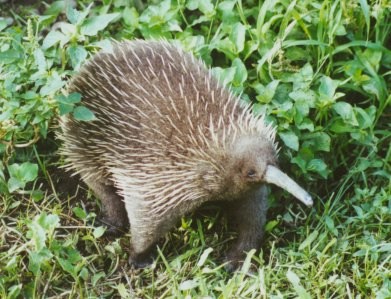Rare echidna species not so extinct after all?

Speaking as a European, Australia has something of a reputation for having some rather unusual wildlife. Easily the most unusual are the small handful of monotreme species – the echidnas, and the duck-billed platypus. The only species of egg-laying mammals in the world today, these little creatures may once have been quite widespread. Now, however, they’re only found in Australia and New Guinea. One species in particular, the long-beaked echidna, is critically endangered. It was believed to have been extinct in Australia for over 30,000 years (and only found in New Guinea), since the last ice age. It was believed, that is, until recently. And the evidence for this rediscovery came from a rather surprising source.
100 years ago, biologists worked a lot differently to the way they do today. Back then, it was common practice to travel to remote places and collect specimens – by way of hunting animals, shooting them, and getting a taxidermist to stuff them. While this bloodthirsty pokemon attitude may seem ghastly to our modern sensibilities, it was once simply the way things were done, and many such specimens are still on display in museums. Though it should be added that such specimen collecting is widely outlawed today.
Nonetheless, one such specimen was found in London’s Natural History Museum. The creature had been “collected” in Australia in 1901, scientifically described, and had subsequently been stored and forgotten about entirely. I have to wonder what those researchers may have done if they’d realised the true significance of this unassuming little creature.
The fascinating thing is really that this little preserved creature is the keystone for the entire study. Just one single specimen. However, it was very well documented and most certainly came from Australia. Its discovery was quite serendipitous too, when zoologist Kristofer Helgen from the Smithsonian Institution, Washington, was paying a visit to the London Natural History Museum.
From the description it was tagged with, this echidna had been found on Mount Anderson, in sparsely populated Northwest Australia. Following up the find, researchers decided to investigate further. In West Kimberley, they spoke to some aboriginal communities where people recounted stories of how their parents used to hunt echidnas which were much larger than the others. Using photographs, they identified those large echidnas as the same long-beaked echidna species still found in New Guinea.
So the big question is, are long-beaked echidnas still found in Australia today? This discovery does give us some more information about how adaptable these spiny little animals are; long-beaked echidnas can evidently survive in both arid Australian scrub land and lush New Guinea rainforests. Until a living animal is found, it’s impossible to make any definite statements. And finding them is no easy task. They’re nocturnal creatures, and the known populations of them in New Guinea are difficult to find. All the same, conservationists can be hopeful that long-beaked echidnas may not be extinct in Australia just yet.
Hammonds M (2013-02-07 00:22:29). Rare echidna species not so extinct after all?. Australian Science. Retrieved: Jul 18, 2025, from https://ozscience.com/biology/rare-echidna-species-not-so-extinct-after-all/
 Follow
Follow
2 thoughts on “Rare echidna species not so extinct after all?”
Comments are closed.